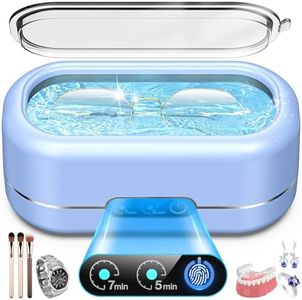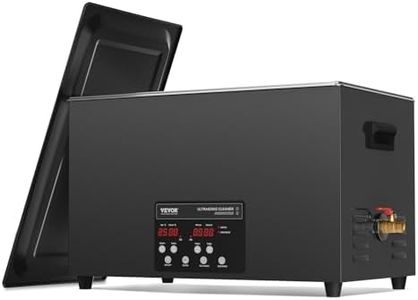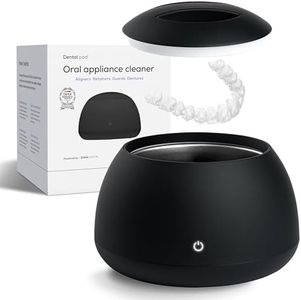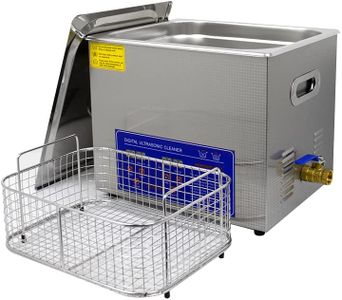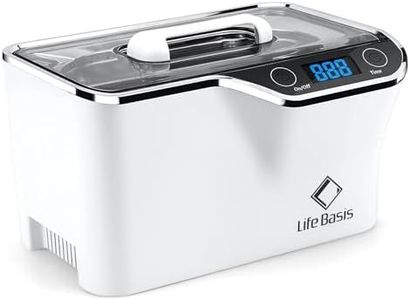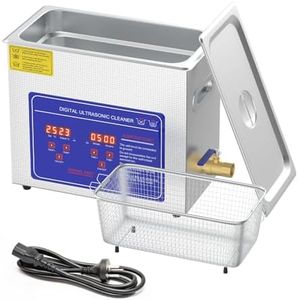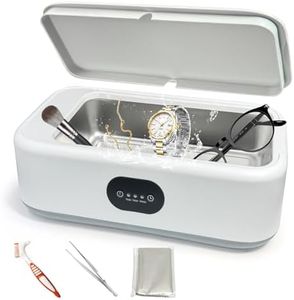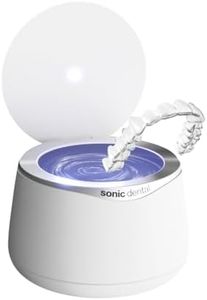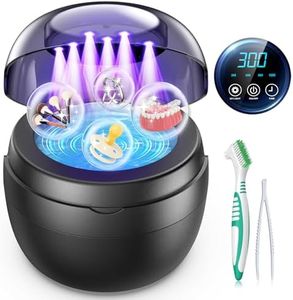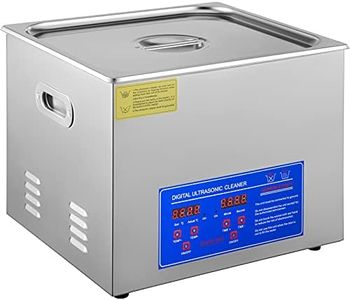We Use CookiesWe use cookies to enhance the security, performance,
functionality and for analytical and promotional activities. By continuing to browse this site you
are agreeing to our privacy policy
10 Best Ultrasonic Cleaners
From leading brands and best sellers available on the web.Buying Guide for the Best Ultrasonic Cleaners
Ultrasonic cleaners are handy devices for thoroughly cleaning a wide range of items using high-frequency sound waves and a cleaning solution. They're commonly used for jewelry, glasses, dental tools, and small automotive or hobbyist parts. When choosing the right ultrasonic cleaner for your needs, it's important to understand the most important features and how they impact cleaning effectiveness and usability. Consider where and how you'll use the cleaner: for home or professional use, for delicate jewelry or heavy-duty parts, and how often you plan to use it.Tank CapacityTank capacity tells you how much cleaning solution the device can hold, directly affecting the size and number of items you can clean at once. Small tanks, usually under a liter, are suitable for rings, watches, or eyeglasses—great if you're cleaning small personal items. Medium tanks (1–3 liters) offer more flexibility for items like tools, small hardware, or multiple pieces at once, making them ideal for small businesses or enthusiasts. Large tanks (over 3 liters) can handle bigger objects or batch cleaning for professional use. Choose a tank size that comfortably fits your typical items, leaving enough space for water to circulate around them.
Ultrasonic FrequencyUltrasonic frequency is measured in kilohertz (kHz) and determines how aggressively the cleaner works. Lower frequencies (around 28-40 kHz) produce larger bubbles, providing powerful cleaning for heavy or stubborn grime but can be too harsh for delicate items. Higher frequencies (over 40 kHz, up to 130 kHz) create smaller bubbles for gentler, more precise cleaning, better for jewelry, watches, or intricate electronics. Most general-purpose cleaners operate around 40 kHz, which balances strength and care. For delicate or sensitive cleaning needs, choose a higher frequency; for heavy-duty applications, a lower frequency is more effective.
Timer SettingsTimer controls let you set how long the device runs in each session. Some cleaners have short, fixed cycles (like 3-5 minutes), while advanced models let you adjust anywhere from a few seconds to an hour. A versatile timer is useful if you clean different kinds of items: short cycles for lightly soiled pieces, longer cycles for heavy dirt. If you plan to use the cleaner for varying items or prefer to experiment for the best results, pick a model with flexible and easy-to-use timer settings.
Heating FunctionSome ultrasonic cleaners include a heating feature, which warms the cleaning solution to boost effectiveness against grease, wax, or stubborn dirt. Heat can make a noticeable difference when cleaning tools, automotive parts, or objects with oily residue. However, heat can damage heat-sensitive items (like some plastics or delicate stones). If you mostly clean items that benefit from warm water, choose a cleaner with an adjustable heating function—otherwise, a non-heated model is sufficient.
Build MaterialThe material of both the tank and the outer casing affects durability, cleaning power, and ease of maintenance. Stainless steel tanks are standard because they resist corrosion and are easy to clean, making them suitable for both home and professional use. Plastic tanks are less durable and may not handle harsh cleaning solutions well, best for occasional or very light use. When in doubt, opt for stainless steel for longevity and versatility.
Controls and DisplayUser interfaces range from simple analog dials or switches to comprehensive digital displays with buttons and precise readouts. Digital displays often make it easier to see and set exact times and temperatures, while analog controls tend to be more straightforward but less precise. If you like convenience and accuracy, or will be cleaning a variety of items, a digital interface is helpful, but if you prefer simplicity, a basic analog model works fine.
